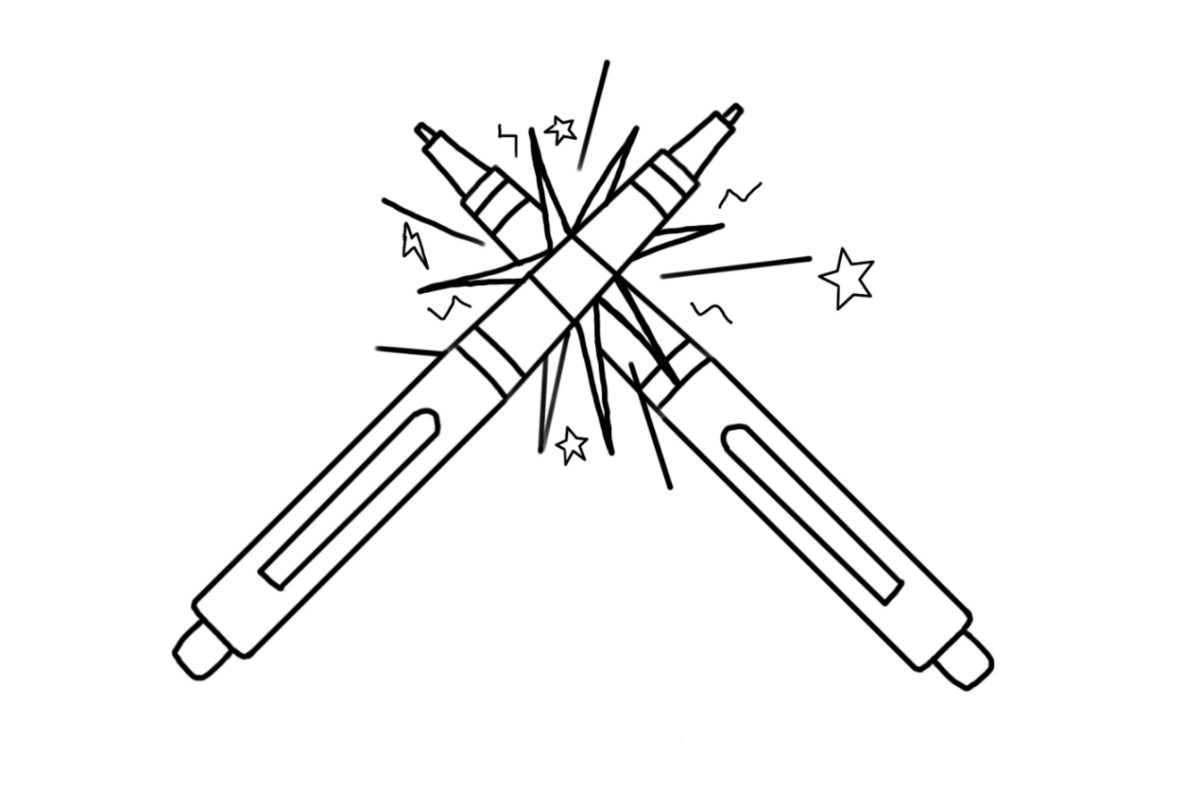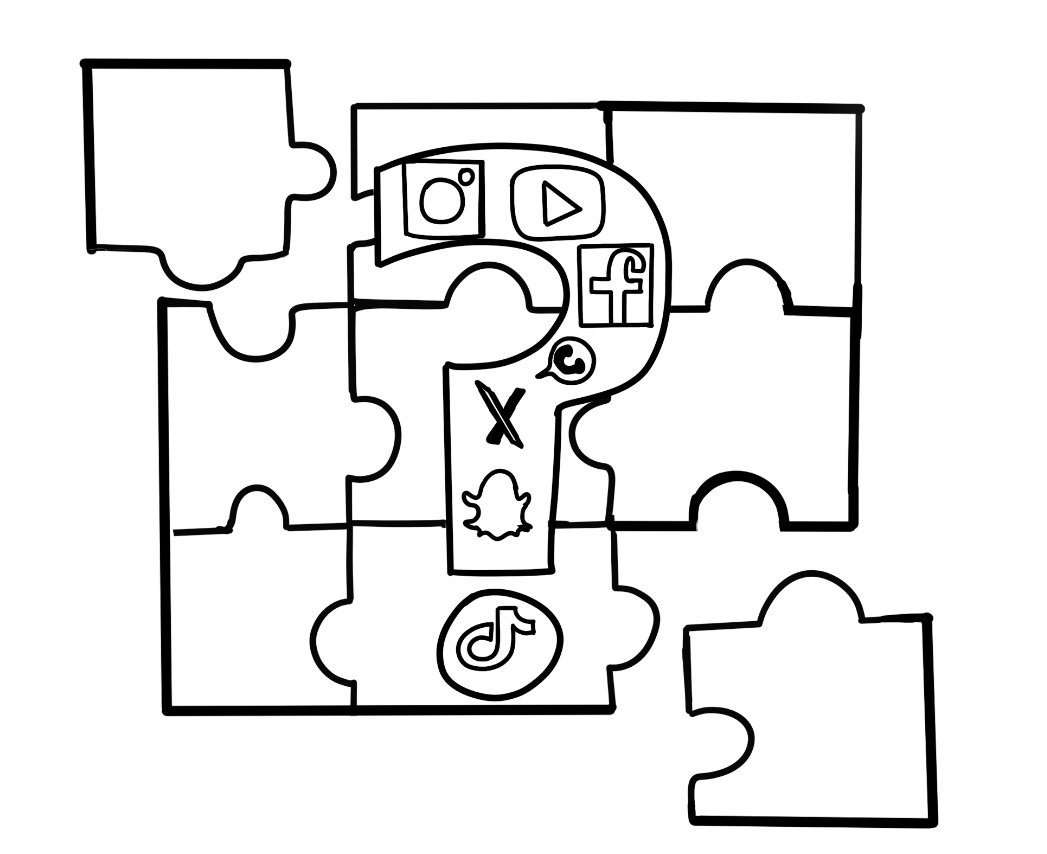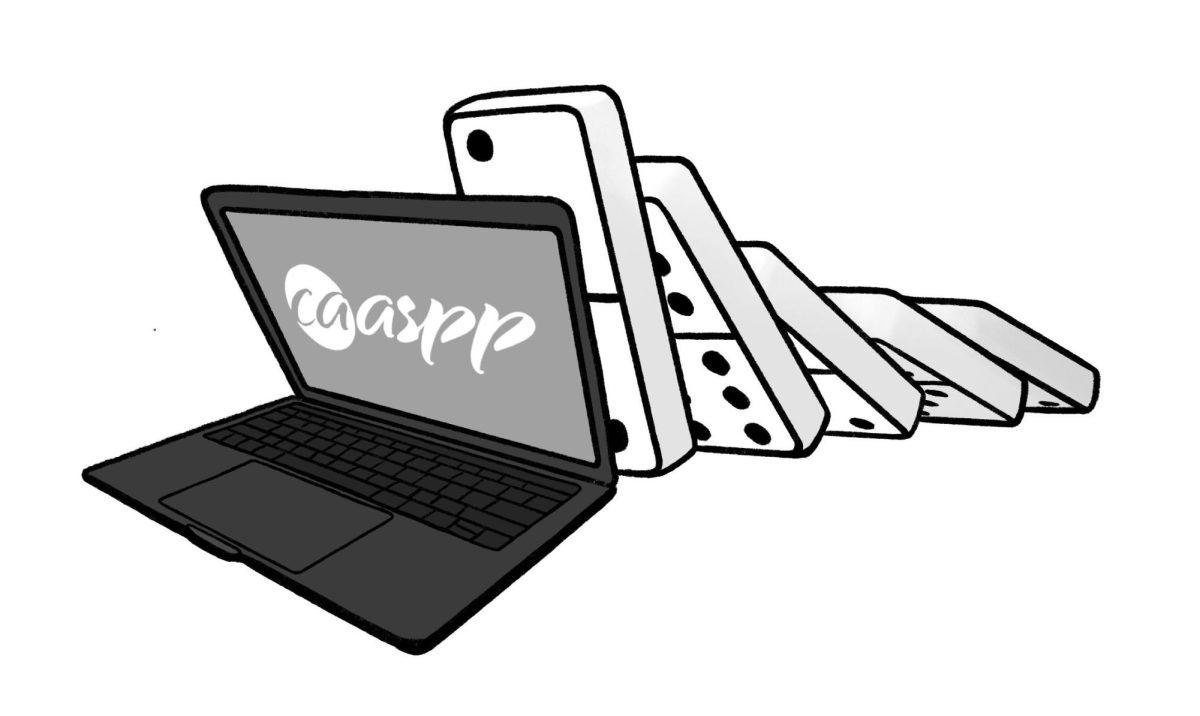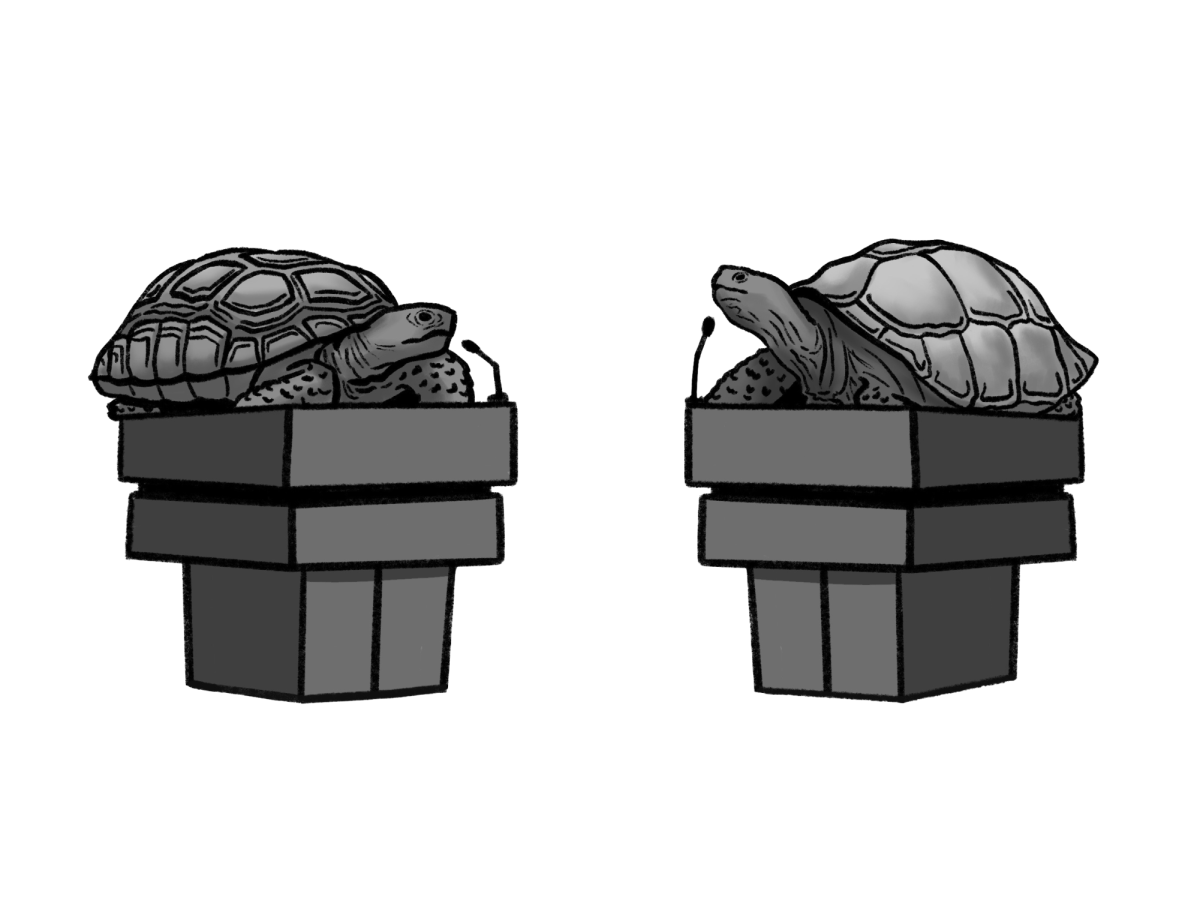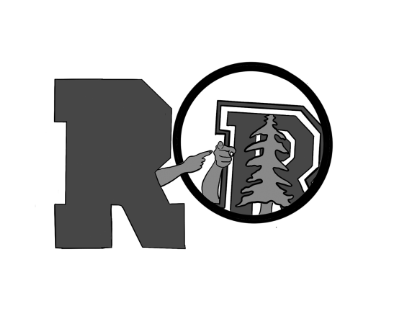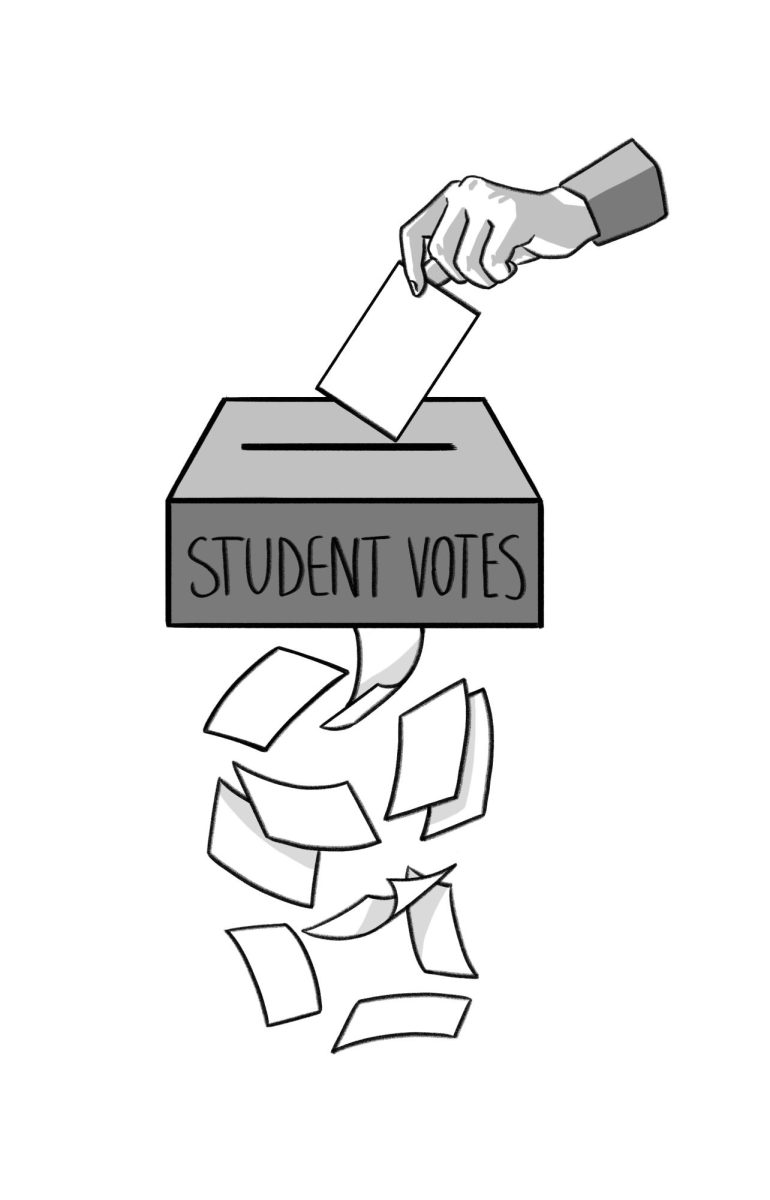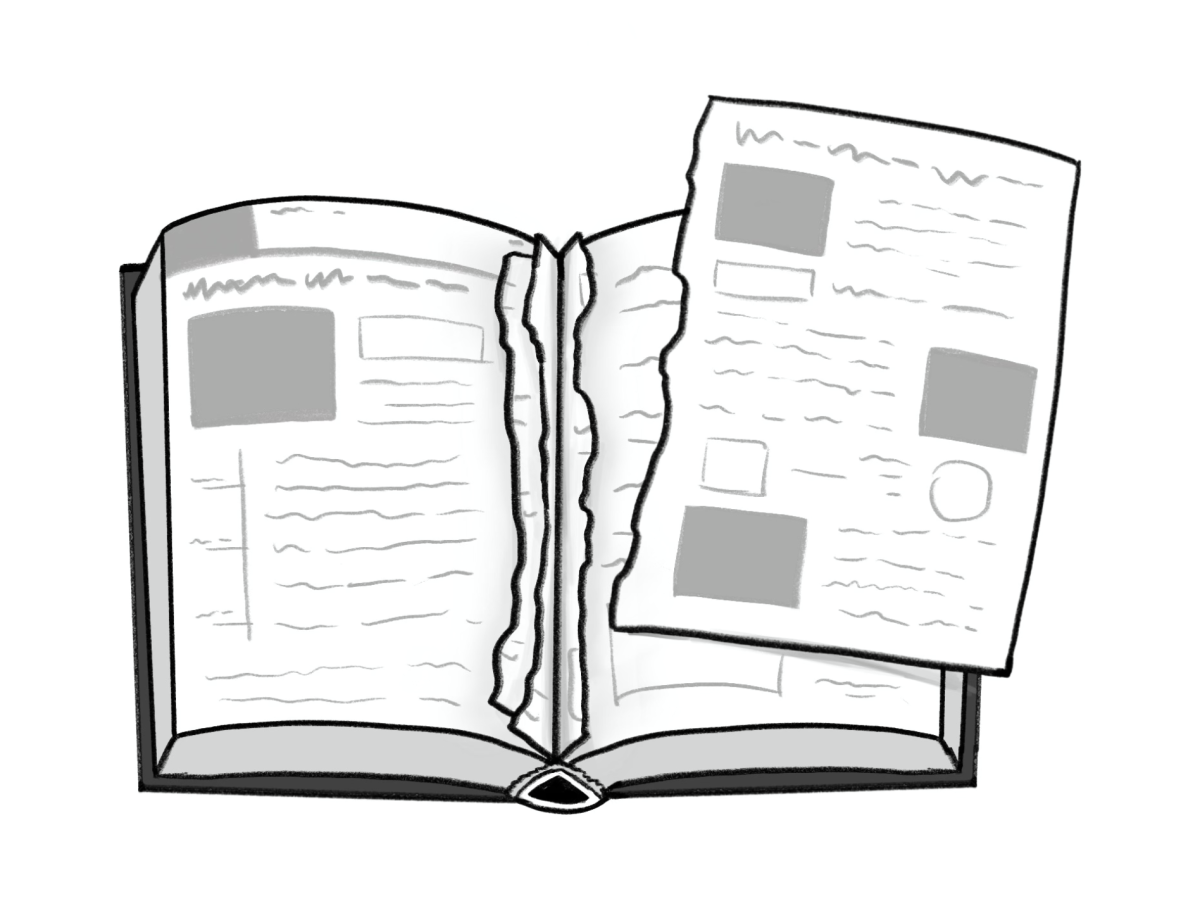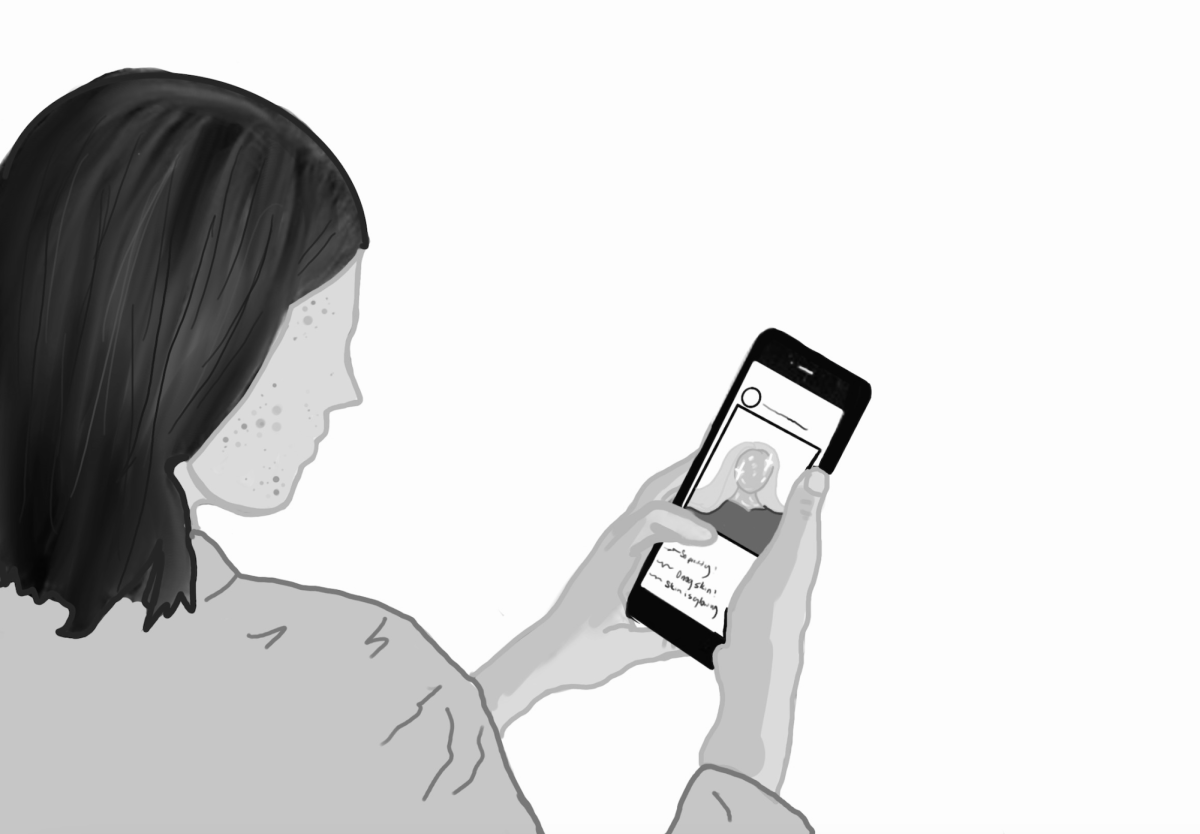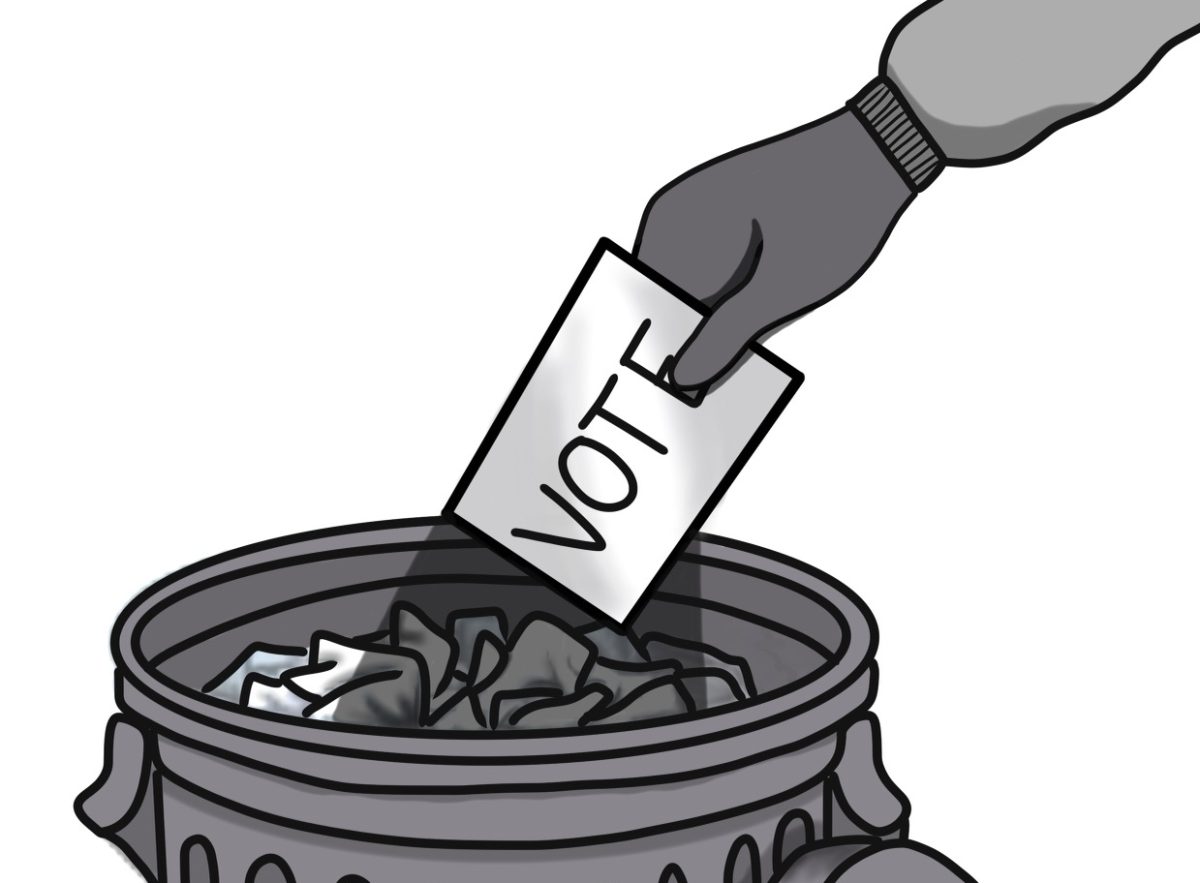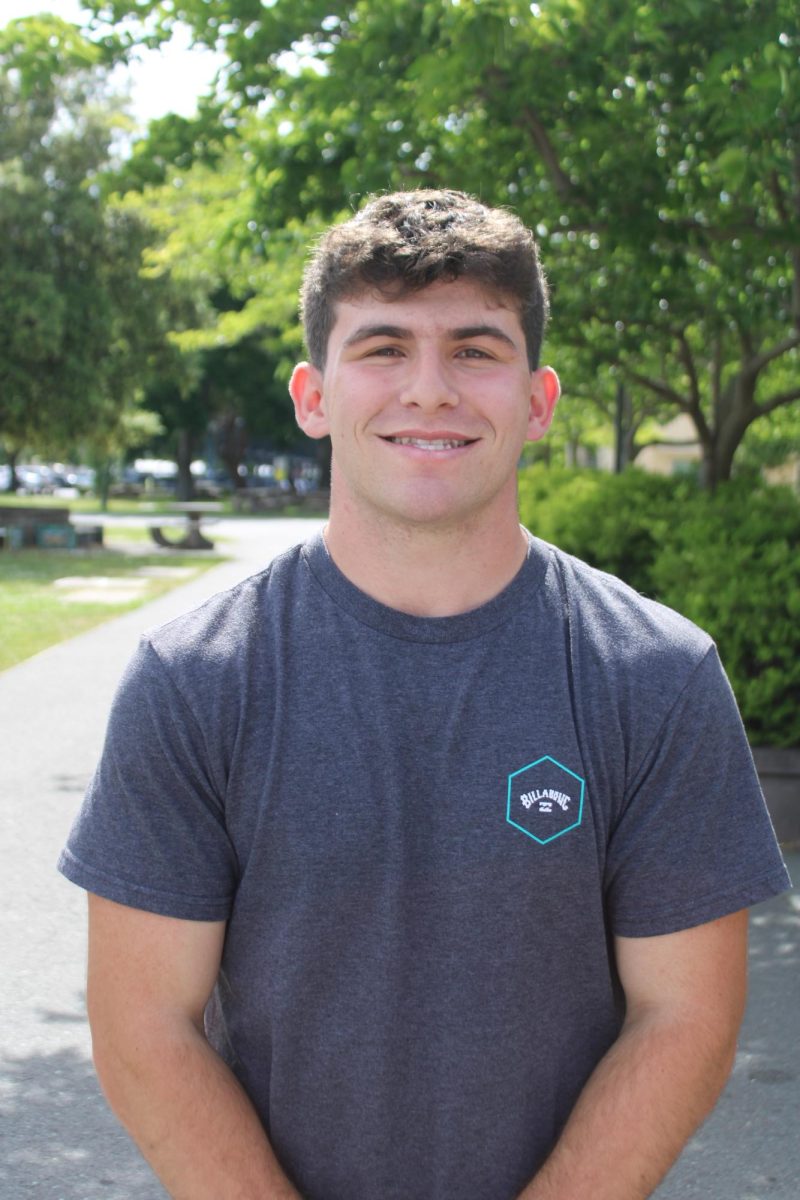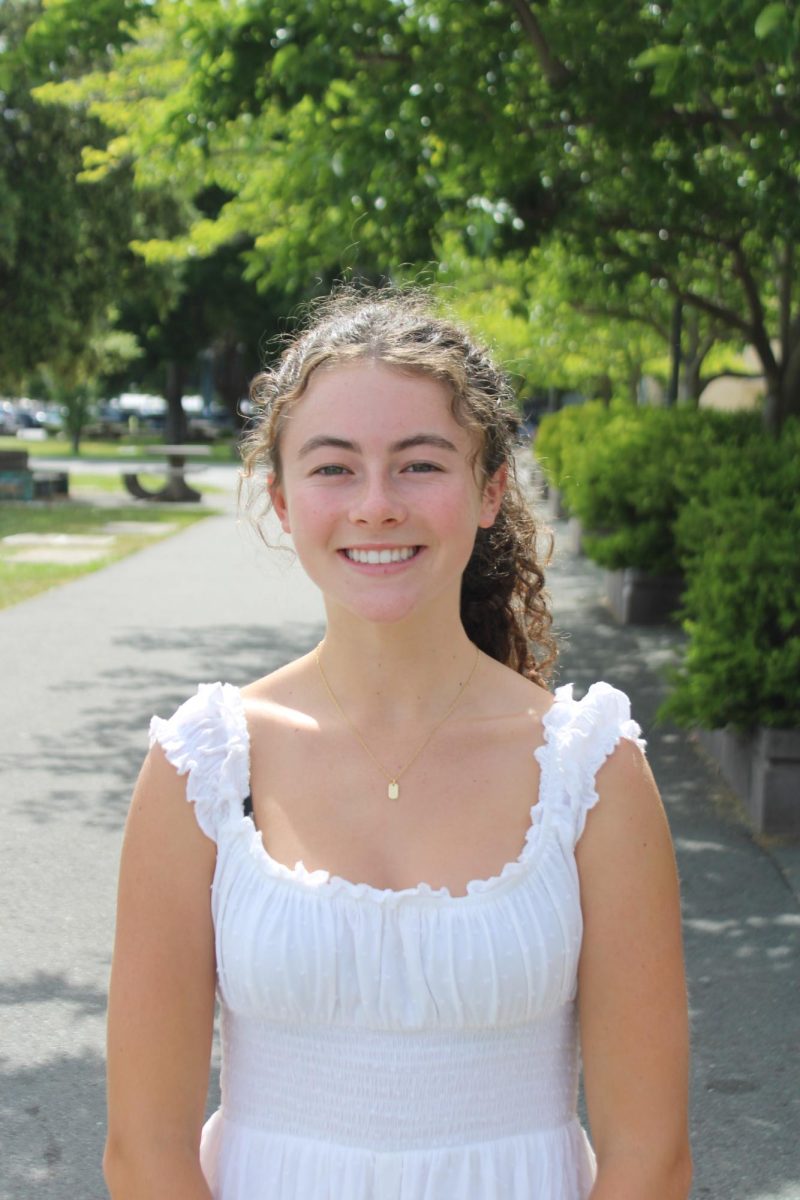Countless times throughout history, when people have imagined a dystopian society, they pictured unknown technology capable of taking over the world. In other words, the end of the world is associated with humans becoming obsolete.
Fifty years ago, this idea was the plot of fictional books, movies and television shows. Today, this is the world we live in, except the reality is that we can work to coexist and live in harmony with artificial intelligence (AI).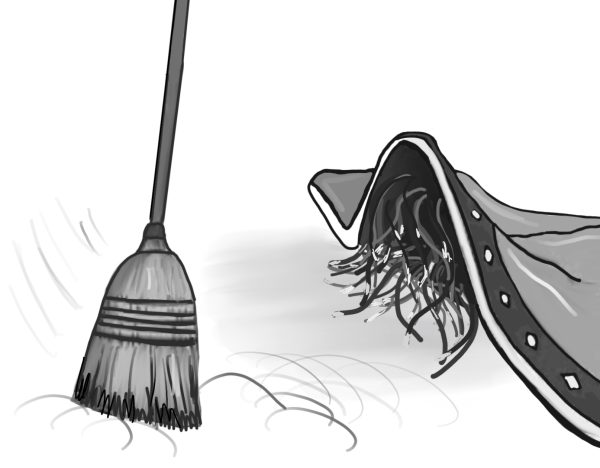
The development of AI was insidious; growing in increments, it wasn’t apparent to anyone what the real consequences would be until they were right in front of us. The graphing calculator, spell check and the Internet were all foreign concepts to the average consumer when they were first introduced and most initial reactions were those of fear, uncertainty and curiosity. As these technologies started to seep into our everyday lives, the fear dissipated into familiarity and we began to rely on them. Generative AI is no exception.
On Nov. 30, 2022, the Chat Generative Pre-trained Transformer (ChatGPT) chat bot was released to the world by the
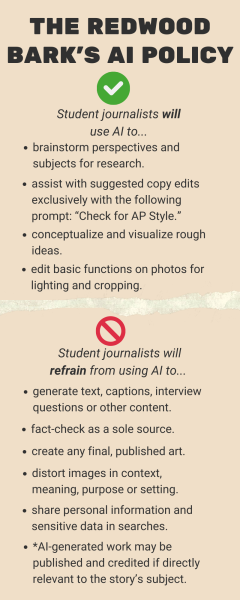 research and deployment company OpenAI. Instantly, ChatGPT and AI revolutionized society by creating effective means of communication regardless of language barrier, composing essays, creating art and coding.
research and deployment company OpenAI. Instantly, ChatGPT and AI revolutionized society by creating effective means of communication regardless of language barrier, composing essays, creating art and coding.
While, as covered on this edition’s first page news article, the Tamalpais Union High School District (TUHSD) has yet to amend or create any policies to address the emergence and use of AI, we hope to define our guidelines for ourselves and our readers.
The Bark has chosen to take the first step to create and implement our own policy on AI, because we understand
that high school students will graduate into a world full of AI programs. They will need to know their way around these tools, with their strengths and weaknesses, in order to work alongside them. We also believe in transparency and clear expectations, and realize that using AI so much can be considered “borderline” without specific guidance and commitments.
With that in mind, The Bark’s program of 154 student journalists explored industry standards and educational guidelines to arrive at a consensus that AI can be used to brainstorm and conceptualize ideas. Any materials suggested by AI will never be copied and pasted by writers, and will solely be used as a basis for further entirely human-led research and story creation. Although AI-generated information is to only serve as a foundation, it will always be fact-checked.
Additionally, AI can be used by writers to conceptualize art or visuals for an article, for art consultants to recreate. No art created by AI will be published by the Bark, except for art created for articles about AI. These rare cases will be clearly labeled and approved by Editors-in-Chief.
For the purpose of editing photos, generative AI will not be used. The only approved photo editing tools are softwares operated by Bark staff, including Adobe Lightroom.
In the unlikely event that any work created by AI is published, only when stories are specifically relating to AI, there will be clear citations and labels to indicate that the work was computer generated. Under all other circumstances, however, the published work will be done entirely by student journalists. Any edits or ideas prompted by AI will be fact-checked and compared with other, non-AI sources and finalized by students, not by the software.
The Bark will continue to consider the AI standards as they evolve, including those set by the Associated Press and U.S. Department of Education AI 2023 guidelines, staff input and technological developments. We encourage other publications, classes and the district alike to follow suit.
As British journalist, philosopher and Nobel Prize winner Bertrand Russell once said, “Fear is the main source of superstition, and one of the main sources of cruelty. To conquer fear is the beginning of wisdom. The hardest thing to learn in life is which bridge to cross and which to burn.”
Developing AI policies is a bridge to responsible journalism. To view The Bark’s evolving AI policies, visit our website under its policy section.







